Introduction
We will look at two ways of creating designs based on the designs and examples of technology found in nature.
-
We could investigate the design, the technology, the biology and the anatomy of plants and animations and search for solutions to design problems that we could adapt and use in our own design work.
-
We could use shapes and forms found in nature to create designs by:
- making exact copies of shapes or forms
- developing stylised shapes or forms based on shapes and forms found in nature
- developing repeating patterns of:
- exact copies of shapes and forms found in nature, or
- stylised shapes or forms based on shapes and forms found in nature.
1. Creating designs based on the design, technology, biology and anatomy of plants and animations
Designers use research methods such as product analysis, library search, internet search, experiments, observation and case study to find out how design problems have been solved in nature.
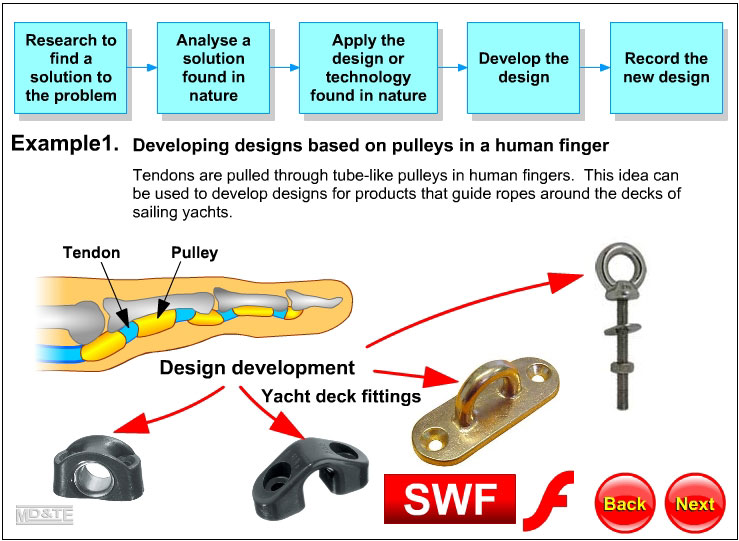
Click on the screenshot above to view the "designs based on technology in nature" animation by Laszlo Lipot
An image showing the Flash animation logo Flash animations are embedded into the pages of all my D&T Modules but there are pictorial links to the animations on this web site so that devices that cannot play Flash animations will at least show a jpeg screenshot of the animation. If your PC or personal digital assistant (PDA) can play Flash animations you may click on an image showing the Flash animation logo |
2a. Creating designs by making exact copies of shapes or forms found in nature
Copies of humans, plants and animals can be used to create sculpture, paintings, toys, dolls and all sorts of printed papers and fabrics. The bronze casting opposite is a typical example of a sculpture used to commemorate a person or an event. The horse head is part of a wooden sculpture adapted for use as a rocking horse. Other copies of nature include figures stamped on coins, plastic imitation flowers; and prints on wall paper, wrapping paper and fabrics. |
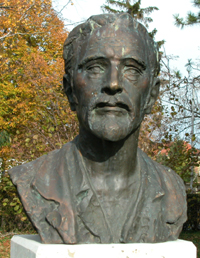 |
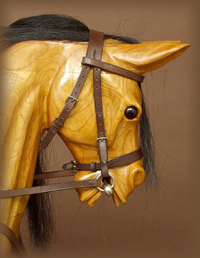 |
2b. Developing stylised shapes or forms based on shapes and forms found in nature
What is a stylised shape?A stylised shape is an artistic representation of something real. Like a caricature of a person, the shape will be recognisable but it is not an exact copy. Examples of stylised shapes used in designsThe shapes of the pieces of stained glass in the lamp shade opposite give the impression flowers but they are not exact copies of flowers. The etched glass lamp shade illustrates how the curves of flower petals, leaves and stems have been exaggerated and developed into sweeping curve designs. Perhaps the most recognisable stylised form can be found on Corinthian style columns, often seen in front of large buildings. The top of the column, (the capital) has stylised acanthus leaves around it. The design is thought to have been inspired by the leaves that sprouted at the top of wooden posts which supported the roofs of some ancient buildings. New shoots that sprouted on the posts would have been cut off regularly but leaves at the top of the posts which could not be reached easily were left, resulting in posts with leaf covered tops. Design development of a post that was smooth for most of its length but had shoots and leaves at the top resulted in the Corinthian column. |
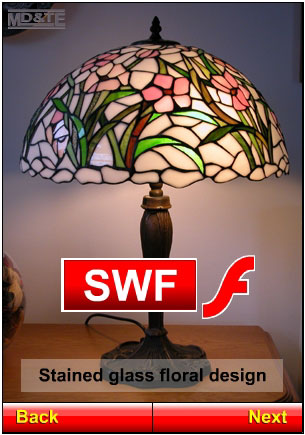 Click on the screenshot above to view the "stylised shapes" animation by Laszlo Lipot |
Techniques for developing stylised shapes and forms
Stylised shapes and forms may be developed in many ways, including by:
- exaggerating a shape or form of an object in order to create a new one
- reducing the shape or form of an object to an outline and developing that shape
- distorting a shape or form to create a new one
- repeating a shape or form and combining the units
- sequencing shapes one above the other like contours on a map
- sequencing shapes one after the other, randomly or in a pattern
- using symmetry or asymmetry in design development
- using techniques for developing spirals or geometric patterns.
Unlike design activities where a designer begins with a problem or design opportunity and works through a series of logical steps to a solution, the designer of stylised shapes has little control over the outcome of the design process. The result of the design development process is a new and novel shape that usually requires an application to be found for it.
The animation below illustrates how an original design may be developed from a shape found in nature.
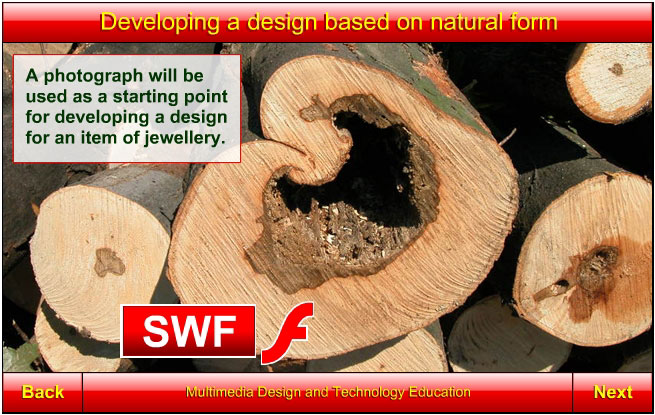
Click on the screenshot above to view the "design development" animation by Laszlo Lipot
2c. Using repeating patterns of shapes and forms
Repeating units of shapes and forms are used as decoration and to improve the function of products. These shapes and forms may be:
- exact copies of shapes and forms found in nature or
- stylised shapes or forms based on shapes and forms found in nature.
Units may be applied by printing, by adding material, by removing material, by deforming material and by casting or moulding material.
PrintingRepeating patterns are widely used as decoration. They are printed on papers, fabrics and plastic laminates, e.g. on products like kitchen work tops and wood laminate flooring. Adding materialSome products like banisters and fences are made up of a number of units of a shape or form, i.e. the design is created by addition. Removal of materialDecorative designs may be created by removing material, e.g. carved wooden picture frames and ventilation holes drilled or stamped into computer cases. Deforming materialDesigns may be pressed or beaten into metals, e.g. the designs beaten into the sheet metal hanging lamp and the slip resistant surface on the galvanised steel steps. Moulding materialMetals and plastics can be softened and then cast or forced into a mould. The metal or plastic moulding will have the same shape and texture as the inside of the mould, e.g. a plastic lemon juice bottle. |
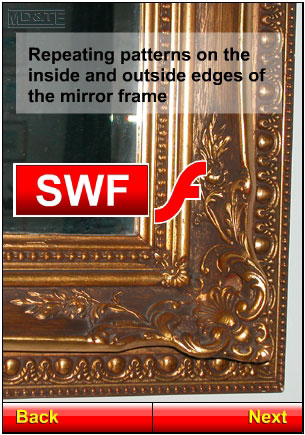 Click on the screenshot above to view the "repeating patterns" animation by Laszlo Lipot |
